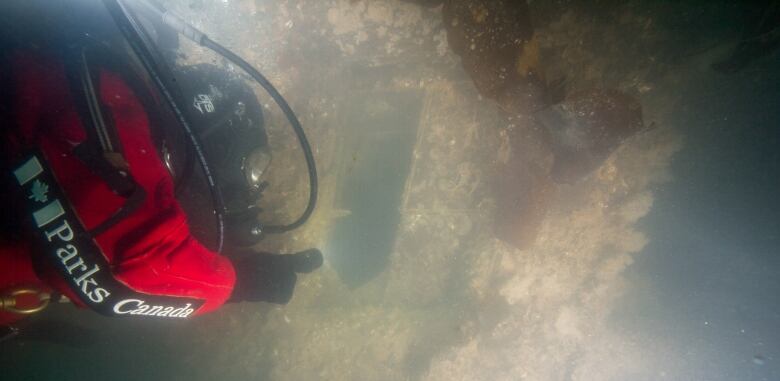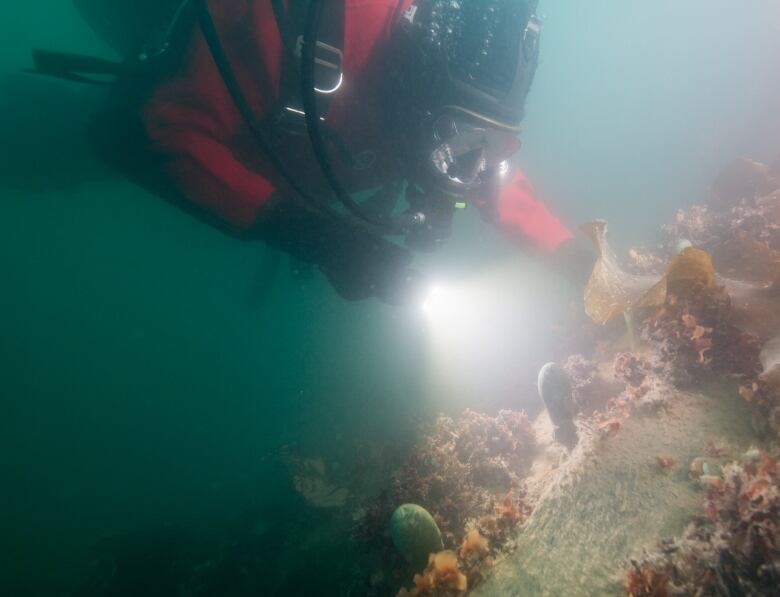'It just got much more complicated': Why the discovery of HMS Terror only raises more questions
Mystery still surrounds what happened after the Franklin Expedition ships were abandoned in 1848

Even though HMS Terror has been found, the wreck's discovery in no way marks the end of the mystery surrounding how the Franklin Expedition met its grim demise in the mid-19th century in the icy waters of what is now Nunavut.
As much as its location had been long sought, the wreck's revelation last month only serves up more questions about the ill-fated British polar mission led by John Franklin in search of the elusive Northwest Passage.
"It's not like it's a solution," says Russell Potter, author of the recently released Finding Franklin, The Untold Story of a 165-Year Search.
"It's like it just got much more complicated. Somebody dropped a huge bag of evidence that you have to wait to open."
Still many questions
While it's now known where Franklin's two ships ended up, the mystery over how they got there and what happened to the 128 crewmembers remains and may endure even after Parks Canada explores the Terror further.

HMS Terror was found in the appropriately named Terror Bay, off the shore of King William Island, about 100 kilometres north of the wreck of the other ship lost in the Franklin Expedition, HMS Erebus.
"The two ships are almost on the same line of longitude," says Potter, "exactly north and south of one another, so that's also something we're just starting to soak in….
"Why would that be?" he wonders. "Two ships we thought might have been parted by some distance — yet they're not that far apart, as it turns out."
'Extremely exciting wreck'
While the wreck of Erebus is somewhat exposed to the underwater elements in Wilmot and Crampton Bay, the relatively pristine nature of the Terror wreck is especially tantalizing for those who have been pursuing the Franklin mystery for years. The possibility that artifacts inside might be well-preserved holds out hope that researchers could learn more about how the expedition met its end.
"It's an extremely exciting wreck site to contemplate," Ryan Harris, senior underwater archeologist at Parks Canada, told reporters on a conference call recently.
"I think our initial questions relate to why it's there."

It's certainly not where they had been looking for several years, with efforts concentrated further north in Victoria Strait.
According to a note left by the expedition crew in a cairn on King William Island, HMS Erebus and HMS Terror were trapped in ice in 1846 and abandoned two years later off the island in Victoria Strait, a place north of where Terror was found.
"Was [Terror] indeed re-manned at some point, as would appear to be the case with the Erebus?" wonders Harris.
Author and longtime Franklin sleuth Dave Woodman thinks so.
"I guess the major takeaway of Terror being in Terror Bay is that, unless you believe in fairies, somebody must have gone back after the 1848 abandonment to get her there."
Wrong bay
The location surprised Woodman, whose book Unravelling the Franklin Mystery: Inuit Testimony, published in 1991, urges careful study of Inuit testimony to try to narrow down where the ships would be.

With Terror, Woodman's reading of the evidence "was that it was going to be found close to shore, near a campsite within sight of land."
All that's true, he says — he just had the wrong bay.
"I'd assumed Erebus Bay [on the northwest shore of King William Island] mainly because it's easier to get to from where the ships were last known to be. Terror Bay — you have to go through a strait, do a sharp turn to the east and then another sharp turn to the north and work your way into a bay."
Yet that's where HMS Terror was found, at the bottom of that bay.
"Ultimately we want to figure out why it's there," says Harris. "We've seen indications on sonar that an anchor cable trails off a short distance, but we want to figure out ultimately where the ship was last left by the crew."
Not much time
Doing that won't be easy.
The vagaries of the northern location and its extreme weather mean a limited season each year for open water exploration around the wreck sites — just a few weeks in August and September. Erebus poses a further challenge because of the wreck's instability.

"The dive team has witnessed first-hand how the otherwise intact upper deck structures are mobile and all together will heave up and down with the swell," says Harris.
"We certainly have a concern about those structures and their propensity to collapse, so there's a certain urgency I think to collect information from the Erebus site."
Terror is in slightly deeper water, seems less threatened and more intact. And maybe that means somewhere deep inside, there are ship's logs or other documents tightly rolled up in a tin that has been soldered shut that could offer insight into what exactly happened to the expedition and its 128 crewmen led by Franklin.
"I think the real question is time. We don't have a clear chronology. We know where the ships are. We don't know when they arrived where they did," says Potter, an English professor at Rhode Island College in Providence, R.I.
"If we had a ship's log, or even a tattered document with a date, if we had some idea of when they arrived where they arrived, that would tell us a lot."
Enough speculation for a while
Woodman, a recently retired BC Ferries captain living in Port Coquitlam, B.C., considers any speculation now to be "pretty much idle."
He even suggests a moratorium for a while, particularly because of the potential, through Parks Canada's work in the next few years, to find evidence that could shed light on what really happened. Parks Canada plans a more indepth site survey to lay the groundwork for further exploration of the site.
"My expectation that [HMS Terror] would be found in Erebus Bay was wrong, but when I go back, I can understand it was my analysis that was wrong. It wasn't the Inuit testimony that was wrong," Woodman says.
He knows that interpretation of that testimony has also suggested that the ship that turned out to be HMS Terror was crushed in the ice. Yet what's been seen of its wreck so far looks quite intact.
"But the ship is sitting in many feet of silt and if they clear that away, they might find actually that it had been crushed on probably the starboard side," says Woodman.

He hopes more consideration will be given to the Inuit testimony as efforts continue to sort out the Franklin mystery.
"What I hope is that people will look at the evidence now and go back and look at the Inuit testimony and the traditional knowledge and say 'they were right all along."'


